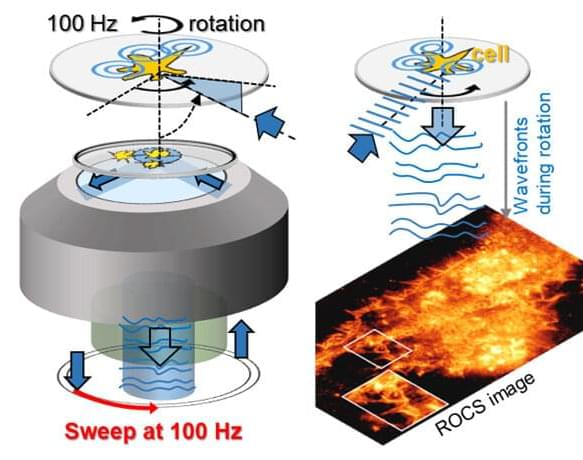When cities transform into a colorful world of lights as darkness falls, it’s often only possible to estimate their contours, which depending on the perspective can draw the attention to key details or trivia. In fluorescence microscopy, biological cells are marked with fluorescent dyes and excited to luminesce in specific areas by optical switches– like a city at night. However, this light is usually too faint for small, rapid objects, or even goes out after a while. This is known as fluorescence bleaching.
Now, a new approach developed by Prof. Dr. Alexander Rohrbach and his team in the Laboratory for Bio-and Nano-Photonics at the University of Freiburg has found a way to make the smallest objects clearly visible without fluorescence. In this way, cellular structures or virus-sized particles can be observed 100 to 1,000 times longer, ten to 100-times faster and with almost doubled resolution than with fluorescence microscopy. While fluorescence microscopy records what you might call “night-time images” of structures, ROCS microscopy takes “day-time images”—opposites that can complement each other excellently. Rohrbach and his colleagues describe various applications of the technology in the latest issue of Nature Communications.
